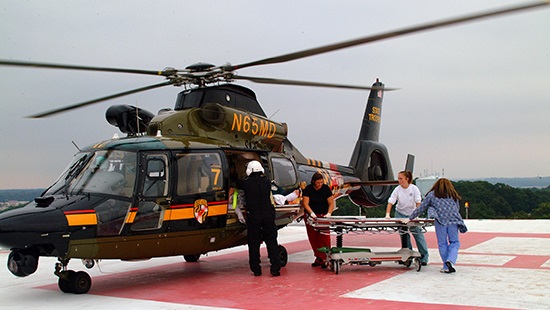Distracted Driving

One of our leading trauma's here at UM Capital Region Health is motor vehicle accidents, some of which occur because of distracted driving. The National Highway Traffic Safety Administration (NHTSA) broadly defines driver distraction as anything that can take focus away from the driving task.
There are three main types of driver distraction:
- Visual - Eyes off the road
- Manual - Hands off the wheel
- Cognitive - Mind off the driving task
Distraction-affected crashes accounted for 8% percent of fatal crashes, 15% percent of injury crashes and 14% of all police-reported motor vehicle traffic crashes in 2018. Additionally, during that same period, 2,841 people were killed and an estimated 400,000 people injured in motor vehicle crashes involving distracted drivers.
Some other things to remember as you head back out on the roads:
- 16% of fatal crashes in 2009 involved reports of distracted driving (NHTSA)
- 20% of injury crashes in 2009 involved reports of distracted driving (NHTSA)
- Drivers who use hand-held devices are 4 times more likely to get into crashes serious enough to injure themselves (Monash University)
- Text messaging creates a crash risk 23 times worse than driving while not distracted (VITI)
- Sending or receiving a text takes a driver's eyes off the road for an average of 4.6 seconds, the equivalent of driving 55 mph the length of a football field blindfolded (VITI)
- Using a cell phone while driving, whether hand-held or hands-free, delays a driver's reaction as much as having a blood alcohol concentration at the legal limit of .08 (University of Utah)
- Driving while using a cell phone reduces the amount of brain activity associated with driving by 37% (Carnegie Mellon)
- In 2009, 5,474 people were killed in crashes involving driver distraction, and an estimated 448,000 were injured (NHTSA)
- Teen drivers are more likely than other age groups to be involved in a fatal crash where distraction is reported (NHTSA)
- 16% of all distracted driving crashes involve drivers under the age of 20 (NHTSA)
- At any given moment during the daylight hours, over 800,000 vehicles are being driven by someone using a hand-held cell phone (NHTSA)
- Distraction occurs any time you take your eyes off the road, your hands off the wheel, and your mind off the task of driving
- (NHTSA)
- 34% of texting teens ages 16-17 say they have texted while driving (Pew Internet)
- 52% of cell-owning teens ages 16-17 say they have talked on a cell phone while driving (Pew Internet)
- 40% of all teens ages 12017 say they have been in a car when the driver was using a cell phone in a way they put themselves or others in danger (Pew Internet)
- 80% of motorist rate distracted driving as a very serious threat to their safety (AAA Foundation)
So be safe. Be careful. And please remember to focus on your driving. It could save your life and the lives of others.
